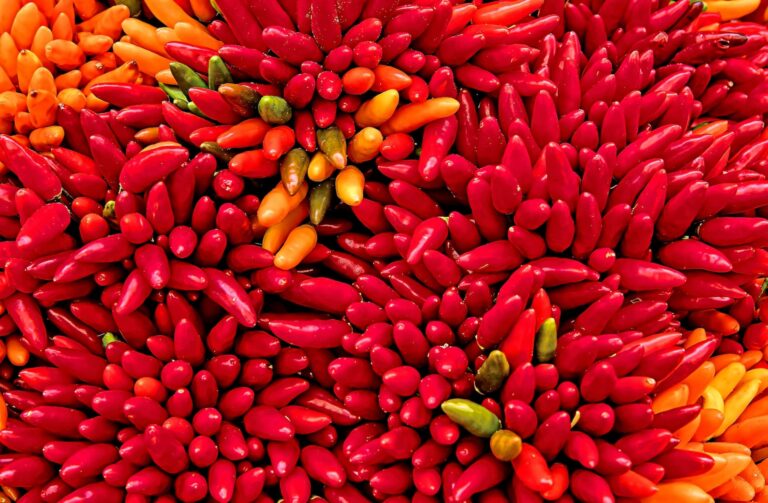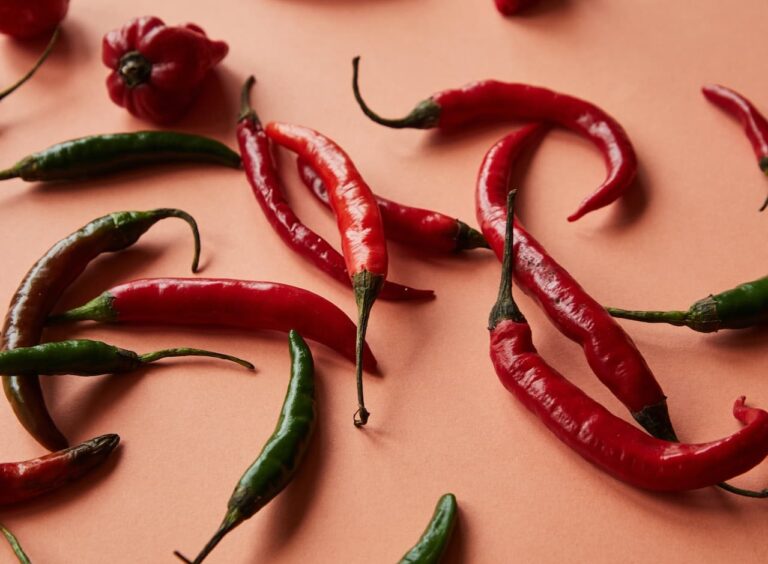North African Hot Sauce
The culinary heritage of North Africa is rich, diverse, and influenced by various cultural, topographical, and historical factors. From the waterless climate and ancient trade routes to links with Europe, many factors influence tastes in Morocco, Tunisia, Algeria, Egypt, and other North African countries. The Cuisines of this region are mostly packed with colorful spices, and this is because they have many large spice markets.
But how has hot sauce grown to become one of the most essential ingredients in North African cuisine with a long and significant cultural history? It’s so significant today that people in places like Tunisia consider it to be the most national condiment. Additionally, its presence in meals signifies generosity, warmth, and hospitality.
The Essence of North African Hot Sauce
There are different flavors and ingredients in North African hot sauce, and these ingredients are from countries across the region. These countries have their peculiar culinary traditions, but you can still find some similarities in the ingredients. For example, across all of North Africa, the common ingredients for making hot sauce are dried peppers, olive oil, caraway seeds, garlic, cumin, salt, cilantro, black pepper, roasted red bell peppers, and coriander seeds.
The ingredients are very flexible, and how you use them completely depends on the type of hot sauce and recipe you want to make. Another interesting thing is that you can use hot sauce as both a condiment and as a marinade. Basically, it’s more than just an ingredient for daily cuisine but also has deeply rooted cultural significance.
Another amazing fact about hot sauce is that it is linked with Islamic religious observance, like Ramadan, when it’s served because its spicy flavor enhances digestion during the fast. Its cultural significance, versatility, and spicy flavor have made it a globally beloved ingredient.
Harissa: The Heart of Tunisian Cuisine
Harissa sauce is one of the most common North African hot sauces and condiments of the Maghrebi cuisine. The name was derived from the word ‘harasa,’ which means ‘to crush or marsh’ in Arabic. From this, you can easily deduce the process of preparing harissa. The sauce is currently one of the main foods of exports of North African countries, which leaves one to wonder where it originates from.
Historical records show that it all started in the mid-sixteenth century during the colonization by Spain. During this period, there was a massive importation of red peppers to Tunisia which led to the creation of the recipe. However, there are slight variations in the recipe today, depending on the region. [1]
The Tunisian Baklouti is the main chili that is used in preparing harissa sauce, and it is an elongated and slightly sweet chili with a mild heat level and a fruity flavor. Other ingredients include herbs, lemon, garlic, caraway seeds, cumin, and coriander, all of which are combined with the chili. Together, these ingredients make a peppery and aromatic paste which can be applied as an ingredient in marinades for grilled fish or meat and dips like hummus.
Even though harissa is mostly linked with Morocco, Libya, Tunisia, and Algeria, it’s deeply rooted in Tunisian Cuisines. In most cases, it’s considered as the country’s national condiment.
Shatta: A Staple in Egyptian Cooking
Shatta is a hot and fiery condiment also called the Middle Eastern hot sauce. It originated in Gaza and is mostly used in Lebanon, Syria, Egypt, and Palestine as a condiment to add more taste and flavor to bland foods. Cuisines within this region are popular for their one-dish meals of vegetables and rice.
The sauce is made traditionally by pounding fresh green or red chilies with salt and allowing it to sit in the sun for some days. This is a fermentation process, and the resulting product is then combined with spices, herbs, and extra-virgin olive oil. Other ingredients used in Shatta include lemon juice, cumin, garlic, and coriander.
Shatta sauce has different variations that are unique to regions in the Middle East. The variation in Egyptian cuisine is the Egyptian Dukkah Shatta (Shatta El-Dukkah). This is basically a combination of Shatta sauce and Dukkah, an Egyptian spice that is made from spices, seeds, and toasted nuts.
The Egyptian Dukkah Shatta is prepared by mixing Shatta with a liberal amount of Dukkah, adding an earthy aroma and a delightful crunch. You can use this as a condiment to boost the flavors of roasted veggies and grilled foods.
Other Notable North African Hot Sauces
Apart from Harissa and Shatta sauce, there are other notable North African hot sauces. Examples include the Moroccan Chermoula and the Algerian Adjika. The Moroccan Chermoula is a common sauce found in Morocco, as the name suggests. It’s a rough paste that is mostly served on top of seafood or fish to enhance their flavor.
The Moroccan Chermoula is also widely used as seasoning for meat and vegetables and as a dressing for salads. Its main ingredients are chili peppers, cumin, coriander, olive oil, lemon juice, pepper, saffron, salt, paprika, parsley, chilies, cilantro, onions, and garlic. Adjika is another hot sauce and a perfect option to combine with grilled or baked meat. The main ingredients used in making Adjika include garlic, tomatoes, carrots, peppers, and apples.
Health Benefits of North African Spices and Peppers
North African spices and peppers are mostly used to add flavor to foods, but their benefits are not limited to flavors alone. They offer a wide range of health benefits, among which include reducing the duration of sickness, preventing heart disease, and promoting weight loss. [2] North African spices and peppers offer these benefits because they are loaded with different nutrients, including dietary fiber, iron, and vitamin A.
A study highlights that these spices and peppers can also be used in treating age-related medical conditions like convulsive disease, and Alzheimer’s disease and in preventing rheumatoid arthritis. They also possess sedative and antioxidant properties, which are vital in managing a range of medical conditions. [3]
Cooking with North African Hot Sauces
North African hot sauces will undoubtedly make your meal more appealing and even tastier. It’s no surprise that they are now widely used in different parts of the world today. Are you wondering how you can incorporate these hot sauces into everyday cooking? Here are some recommendations to try:
- Spice Up a Sandwich: You can make your sandwich more exciting with these hot sauces. Harissa sauce is a great option to try, and you can use it, even if it’s a grilled cheese sandwich you’re making.
- Add Flavor to Salad: Shatta sauce is a great option to consider if you want to add more flavor to your salad.
- With Wings: This is the most obvious way to use these hot sauces. North African hot sauces work with chicken wings and any type of meat.
Basically, you can’t go wrong with these North African hot sauces when you incorporate them into everyday cooking. Other things you can try with these hot sauces are to add to a stir fry, with tacos, drizzled on pizza, and with soup.
DIY Recipe: Making North African Hot Sauce at Home
North African hot sauces are easy to make, and the ingredients you use completely depend on your preference. This is why there are variations in the hot sauces for each North African country. The interesting thing is that you can make a North African hot sauce at home within 30 minutes.
Here’s what you need:
- Spices:
- 1 tsp Cumin (ground)
- 1 tsp Coriander (ground)
- Salt to taste
- Tomato Paste:
- 2 tbsp
- Olive Oil:
- 2 tbsp
- Garlic:
- 3 cloves, minced
- Roasted Red Bell Pepper:
- 1 large pepper, roasted and peeled
- Fresno Chilis (or preferred chilis):
- 3-4 chilis, depending on desired heat level
- Water:
- ¼ cup (adjust as needed)
- Optional – Lemon:
- Juice of ½ lemon
Instructions:
- In a food processor, combine the roasted red bell pepper and chilis. Pulse until you achieve a smooth, thick puree.
- Heat a saucepan over medium heat. Add olive oil, minced garlic, and tomato paste. Cook for a few minutes until the acidity of the tomato paste is reduced.
- Stir in the chili pepper puree and cook for 5 minutes.
- Add water, cumin, coriander, and salt. Stir well.
- Let the sauce simmer for 10-15 minutes, allowing the flavors to blend and the sauce to thicken slightly.
- If using, add the lemon juice, then taste and adjust the seasoning as needed.
Conclusion
The significance of hot sauces in North African cuisine cannot be overemphasized. They have a rich culinary heritage with cultural relevance. Some of these hot sauces are considered to be national condiments, like Harissa in Tunisia. They also have religious relevance, as mentioned above.
In addition, North African hot sauces offer a wide range of health benefits. This includes promoting weight loss, preventing heart diseases, and boosting immunity. You can only enjoy these benefits when you incorporate these sauces into everyday cooking. We have highlighted some ways you can use these sauces above, but feel free to explore and experiment with these flavors when cooking.
Sources
[1] Fulton, A. “Harissa: The Story Behind North Africa’s Favorite Hot Sauce.” NPR, 2012.
[2] Zelman, K. “Health Benefits of Chili, Chili Peppers, and Chili Powder.” WebMD, 2022.
[3] Kuete, V. “Other Health Benefits of African Medicinal Spices and Vegetables.” In Medicinal Spices and Vegetables from Africa, pp. 329-349, 2017.







